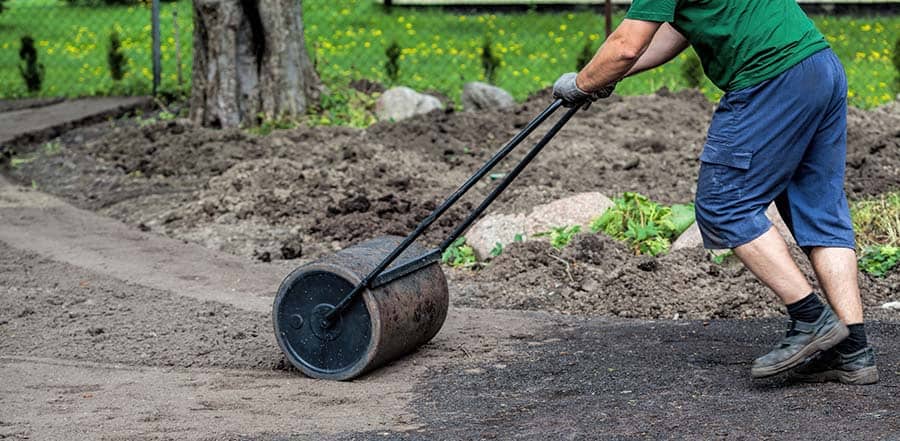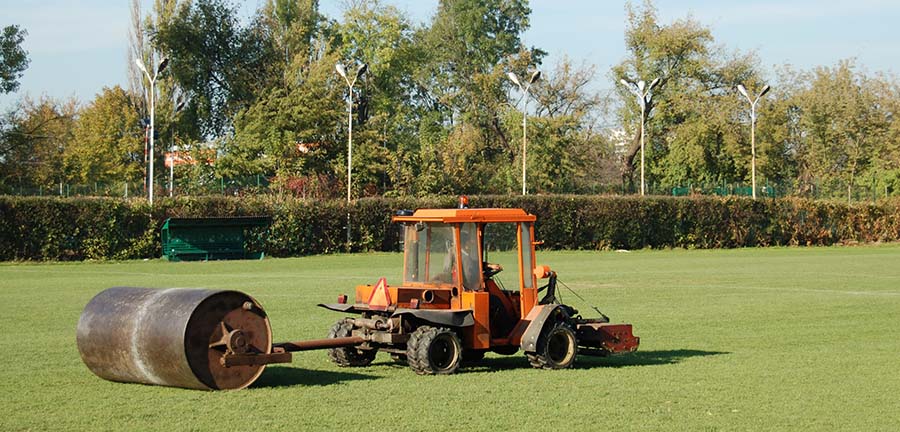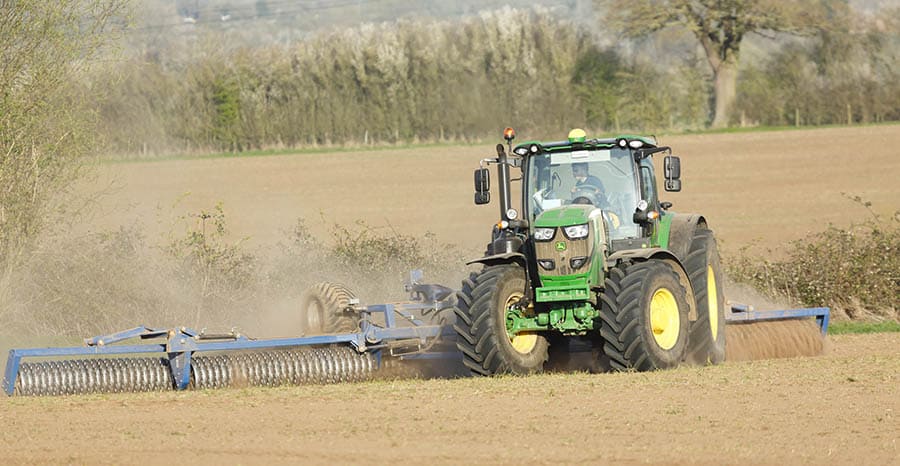When searching for a way to flatten and smooth your garden plot or to roll over your freshly laid seeds, you might come across two options: the lawn roller and the cultipacker. What are these two tools, and how are they different?
Lawn rollers are heavy, hollow, smooth cylinders made of either metal or plastic that can be pushed by hand or pulled behind a lawnmower. Cultipackers are heavy rollers made of multiple wheel-like metal plates placed parallel on an axel.
Lawn rollers and cultipackers have very similar uses, but each one has its advantages and disadvantages for particular tasks. Read on to learn more about lawn rollers and cultipackers and what they are used for. This may help you decide which one better suits your needs.
Lawn Roller vs. Cultipacker: What’s the Difference?
When deciding between a lawn roller and a cultipacker, it’s essential to know the differences between the two and the tasks that are best for each one.
The following chart outlines the differences between lawn rollers and cultipackers:
| Lawn Roller | Cultipacker |
| Cylinder is smooth | Cylinder is corrugated |
| Metal and plastic options | Metal |
| One piece | Multiple wheel-shaped plates |
| Can be pushed by hand or attached to lawnmower or ATV | Must be attached to tractor or ATV |
| Can be used to roll out fresh sod | Can’t be used to roll out fresh sod |
| Compacts the topsoil | Compacts topsoil; breaks up dirt clods; leaves ridges in the soil for better moisture retention |
Lawn Rollers
Lawn rollers are heavy cylindrical rollers. They may be used as they are, but they are hollow so that even more weight may be added using either water or sand.
Lawn rollers are generally used for the following purposes:
- Rolling over seeds to help seeds maintain contact with soil
- Rolling over fresh sod
- Smoothing out your lawn or soil
Seeding and Sodding with a Lawn Roller

Lawn rollers are rolled over seeds after they are planted or distributed on the soil. The weight of the roller presses the seed into the soil, which helps prevent the seeds from being washed or blown away. Optimal contact with the soil also helps seeds to germinate faster.
Much like with seeds, lawn rollers are often used when laying sod. The roller can be used before laying the sod to make the soil and smooth and flat as possible. Once the sod is laid, the roller can be used to remove air pockets and to ensure contact between the roots and the soil.
Smoothing Out Your Yard with a Lawn Roller
Lawn rollers work to smooth out your yard by compacting the topsoil. This is a task that might be necessary before laying sod for maximum contact between the sod and soil. This might also be done to flatten molehills or to repair other damage caused by pests.
A lawn roller is not intended to level your lawn or soil plot. If leveling is necessary, it should be done before using the lawn roller by removing soil from high areas and filling in low areas.
Steel vs. Polyurethane Lawn Rollers
Lawn rollers are typically available for purchase in either steel or polyurethane varieties.
The following chart describes the features of steel and polyurethane lawn rollers:
| Steel | Polyurethane |
| Sturdier | Costs less |
| Heavier | Lighter |
| More stable on hillsides | Easier to turn |
| Will not puncture easily | More likely to crack or be punctured |
| Can only be filled with water | Can be filled with water or sand |
| Can rust | Will not rust |
Hand-Pushed vs. Attachment Lawn Rollers

Another decision to make for your lawn roller, should you decide to use one, is whether you want to push or pull the roller with your body strength. If this does not sound like the best option for you, lawn rollers can also be attached to a lawnmower or possibly even an ATV.
Hand-pushed lawn rollers are better suited for small jobs. When filled, lawn rollers can weigh several hundred pounds. A potential benefit, however, is that a hand-pushed roller will be easier to maneuver in tight corners.
It is easier to pull a lawn roller than it is to push one:
- When pushing a heavy object, force is being applied toward the object, which increases friction.
- When pulling a heavy object, force is being applied away from the object. It’s still a heavy object, but you aren’t adding resistance by pulling.
Attaching your lawn roller to either a lawnmower or ATV has the advantage of saving both time and energy. However, it is important to make sure that whatever machine being used has the torque power to pull the weight.
There are also lawn rollers available that have the option to switch between these two options.
Can You Use a Lawn Roller Too Often?
The lawn roller works by compacting the topsoil. While this can have its uses and advantages, you must be careful that your soil does not become too compacted.
Overly compacted soil is not ideal for plant roots. It can limit root development as the roots have too difficult a time growing through the soil. Fewer and smaller roots mean the plant has less ability to absorb water and nutrients from the soil.
Not only can overly compact soil cause the roots to be stunted, but it can also prevent water from moving through the soil to the roots as well.
Cultipackers
A cultipacker is a tractor attachment that is made of a heavy rolling cylinder. The cylinder is made up of a row of peak-edged plates mounted on an axel.

A cultipacker is primarily used for the following purposes:
- To smooth and firm a seedbed after it has been disked or tilled
- To improve moisture retention by removing excess air from the soil
- To prepare the soil for seeds
- To press seeds into the soil after planting
Cultipackers are more often used on larger plots of land, but they may also be used in a yard. Since they must be pulled by a tractor or ATV, working in tight corners may be a problem.
Smoothing the Soil with a Cultipacker
A cultipacker does not merely compact the soil with its weight as a lawn roller does. A cultipacker also breaks up dirt clods that are left after the soil has been disked or tilled.
Where a lawn roller compacts the soil surface flat using its smooth surface, a cultipacker leaves small ridges that help prevent the soil from crusting after heavy rain.
Maintaining Optimal Moisture Conditions with a Cultipacker
When a cultipacker is used, excess air is forced out of the soil by compaction. This slows down the rate of moisture evaporation. However, a cultipacker does not over compact the soil as a lawn roller can.
The shape of the cultipacker’s cylinder leaves little valleys in the soil that are an ideal depth to channel rainwater to seeds and limit evaporation by the wind while not being too deep to allow standing water.
Seeding with a Cultipacker
Whereas a lawn roller is only beneficial to seeds after they have been planted, it helps to use a cultipacker both before and after planting seeds:
- Before the seeds have been planted, the cultipacker firms the soil and helps to optimize it for planting.
- After the seeds have been planted, the cultipacker presses the seeds into the already firm soil and maintains the ridges that prevent the loss of seeds from runoff.
Cultipacker Plates: Smooth vs. Notched
A cultipacker is made up of a series of wheel-shaped metal plates placed parallel on a cylinder. The edges of these plated come to a peak in the middle of the outside rim. These edges may be smooth or notched.
Each plate on a cultipacker rolls independently to allow for a better, more even soil compression. Notched plates, or knobbed as they may sometimes be called, will work better when breaking up hard clay or rocky soil. They will also leave “dimples” in the ridges left behind the cultipacker.
Conclusion
Lawn rollers and cultipackers are similar in some ways. Both are rolling implements that are used to smooth soil and increase soil contact for planted seeds. However, while a lawn roller simply compresses topsoil, a cultipacker breaks up clods of dirt and compresses the soil.
Lawn rollers are usually used on grassy lawns but can be used on the soil. Cultipackers are more typically used in large fields but can be used on smaller soil beds.

